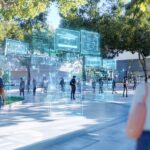Understanding visitor behavior is essential for enhancing outdoor recreation areas, making the collection of visitor data crucial for this purpose. By analyzing visitor data, facility planning and management can be improved through a better understanding of how these spaces are utilized. This article explores various techniques for gathering visitor data, including surveys, interviews, and innovative technological solutions. Successful case studies are highlighted to demonstrate the positive impact of this data. The article concludes with strategies for implementing effective data collection techniques in outdoor facilities.
The Importance of Visitor Data and Park Management for Outdoor Recreation Areas
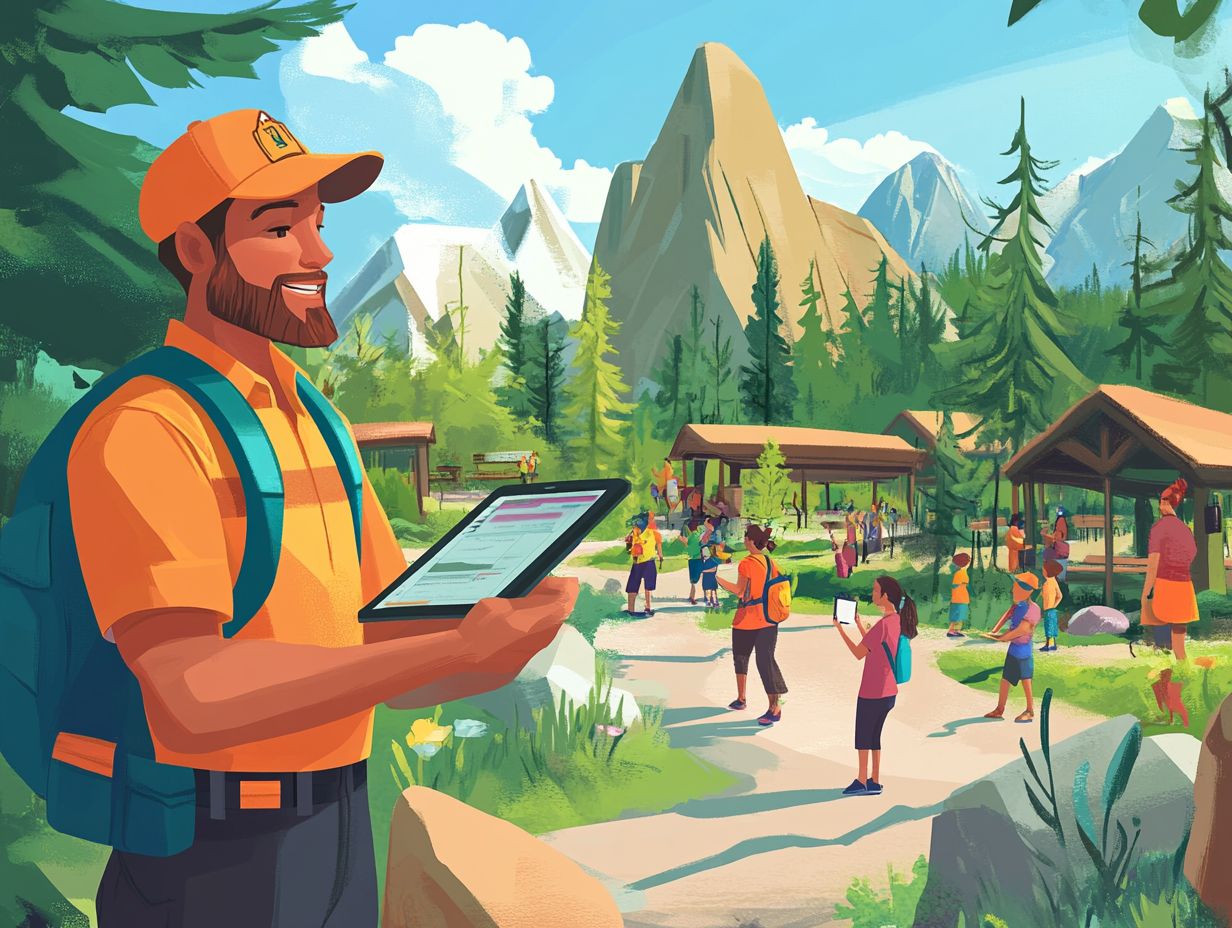
Visitor data refers to the information collected regarding the patterns of outdoor recreation visitors, including visitation frequency, visitor demographics, preferences, and behaviors.
This data is essential for enhancing outdoor recreation areas, as it provides insights that support park management and data-driven decisions. By tracking visitor attendance, park managers can evaluate demand for various facilities and prioritize improvements accordingly.
Additionally, visitor data encompasses user feedback from surveys and engagement metrics that offer valuable information about users’ preferences and behaviors, enabling park authorities to optimize recreational amenities such as trailheads, parking areas, restrooms, and campgrounds to enhance the user experience.
Furthermore, this data helps in understanding the recreational needs of specific demographic groups, promoting the creation of programs and activities tailored to diverse populations. It also aids in monitoring sustainable practices, such as assessing the carrying capacity of parks and evaluating the environmental impact of visitor activities on the ecosystem.
Ultimately, utilizing visitor data improves management systems, leading to enhanced visitor experiences in outdoor recreation areas.
Understanding Visitor Behavior, Needs, and Facilities Improvement
The charts from the American Outdoors Association illustrate the demographics and activities of outdoor recreation users in the United States. Understanding user behavior and needs is essential for optimizing outdoor recreation areas.
Factors such as demographics (age, income, and region) help park managers determine which activities and amenities will be most preferred by users. For instance, families with young children may favor parks that offer family-friendly facilities such as playgrounds and picnic areas, while families with teenagers might seek parks with nature trails or climbing areas.
The types of recreational activities that users engage in can vary significantly; some individuals enjoy passive pursuits like birdwatching, picnicking, or reading, while others prefer more active outdoor activities such as hiking, walking, fishing, running, or cycling.
Furthermore, the importance of collecting user feedback through surveys and other methods cannot be overstated. When park managers actively seek feedback from their communities, they gather crucial data that can inform engagement strategies and enhance the park experience based on the specific requests and needs of their diverse clientele.
How Data Can Improve Facility Planning and Management
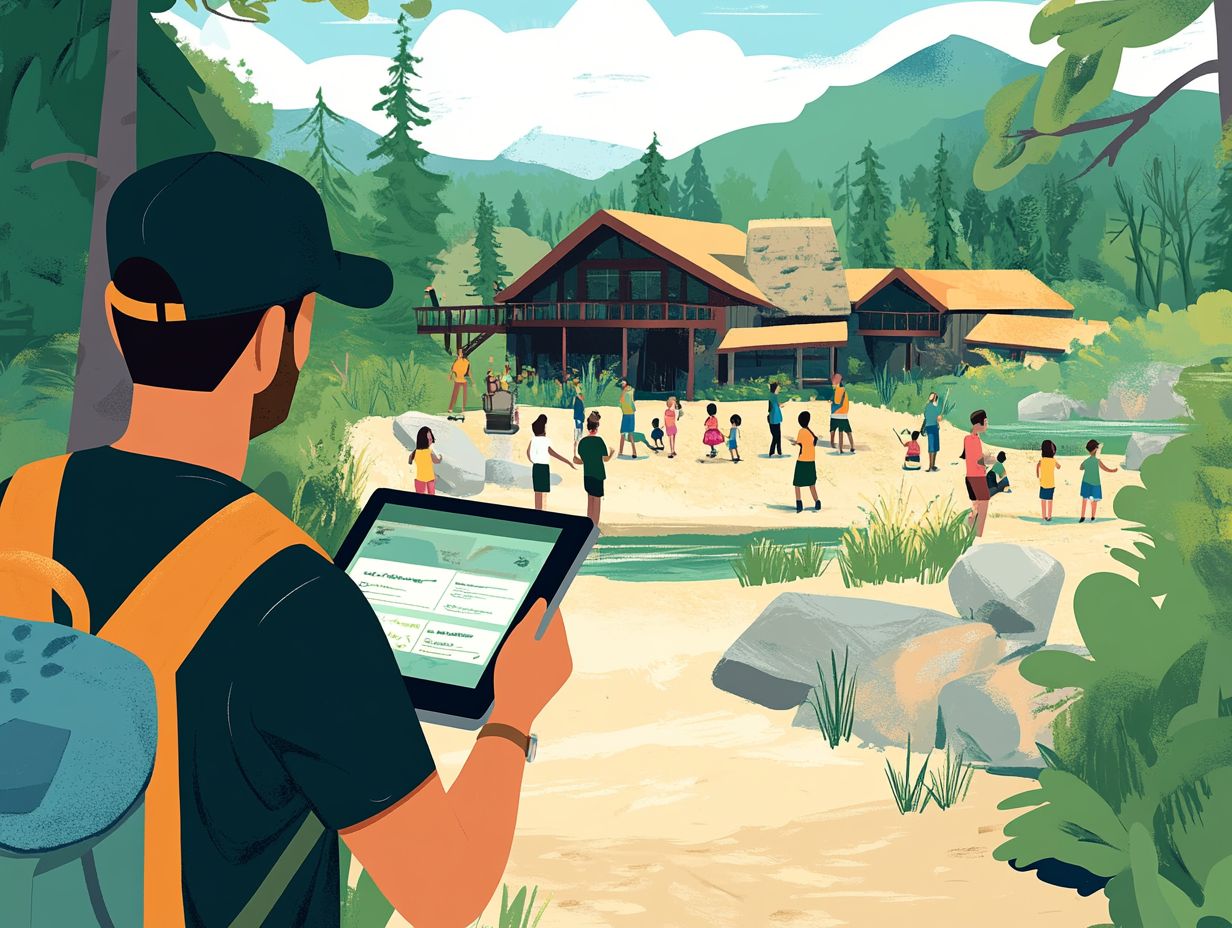
Data analysis enhances facility planning and management for outdoor recreation areas, enabling stakeholders to make informed decisions regarding infrastructure and amenities.
By utilizing deep performance metrics, park managers can identify patterns in visitor usage and maintenance needs, which helps ensure proper resource allocation. For instance, understanding levels of user engagement can optimize maintenance schedules, allowing repairs to be prioritized during periods of lower demand, ultimately improving visitor satisfaction.
Additionally, analyzing user behavior through data helps pinpoint the best times for facility upgrades, ensuring that amenities meet evolving user requirements. Implementing data-driven facility management processes not only improves operational efficiency but also fosters more sustainable and enjoyable experiences for all outdoor recreation users.
Methods for Collecting Visitor Data
Visitor data collection refers to the process of tracking, measuring, and recording various aspects of people visiting recreational spaces, including their numbers, length of stay, arrival times, and additional factors. This process enables parks and outdoor recreation areas to monitor trends in public usage and identify specific factors that influence demand, such as staff availability, weather conditions, and special events. Visitor data collection methods can be categorized into traditional and technological approaches, each with its own advantages and disadvantages. This data is crucial for improving park facilities and ensuring safety measures are in place.
Traditional Methods of Visitor Data Collection
- Simple Counting: The simplest and oldest method for gathering visitor data is to count the number of people entering and exiting a park. This counting commonly occurs at the entrance of a facility and can be executed manually or automatically. Manual counting involves observing and recording the number of visitors at regular intervals, such as every 10 or 15 minutes. In contrast, automatic counting utilizes various technologies, including infrared beams, magnetic strips, and pressure-sensitive mats.
- Surveys and Interviews: Surveys and interviews provide both qualitative and quantitative data about visitors, including demographic information, preferences, motivations for visiting, and opinions on facility quality. Surveys can be conducted on-site for a representative sample of visitors or online for a broader audience. Additionally, focus groups can be used to gather qualitative insights regarding visitor experiences.
Technological Methods of Visitor Data Collection
- Cameras and Image Recognition: Digital imaging with cameras is one of the most effective techniques for counting visitors. Automated systems can be implemented to estimate and verify visitor numbers in real time at various locations within a park. These systems work by creating a virtual line across a road or trail and counting the images captured of visitors crossing that line at regular intervals. The total number of images collected can then be used to estimate overall visitor numbers.
- Sensors and IoT Devices: A range of sensors and Internet of Things (IoT) devices can be employed to count visitors, measure their dwell time, and collect other useful data. These sensors can be strategically installed throughout a park to monitor foot traffic and estimate usage. Additionally, video analytics powered by artificial intelligence can effectively gather visitor data. Drones can also be utilized to monitor and measure the movement of visitors in outdoor spaces, although they tend to be more expensive and disruptive than other technologies. These methods contribute significantly to understanding visitor flow and trail maintenance.
- Mobile Device Tracking: Various applications can track visitor location, movement, and timing. GPS and Wi-Fi technologies can be used to monitor mobile devices in real time, providing insights into visitor patterns and usage. Moreover, mobile devices can facilitate the collection of survey data.
Overall, effective visitor data collection is crucial for understanding park usage patterns and improving the management of recreational spaces.
Surveys, Interviews, and Observation
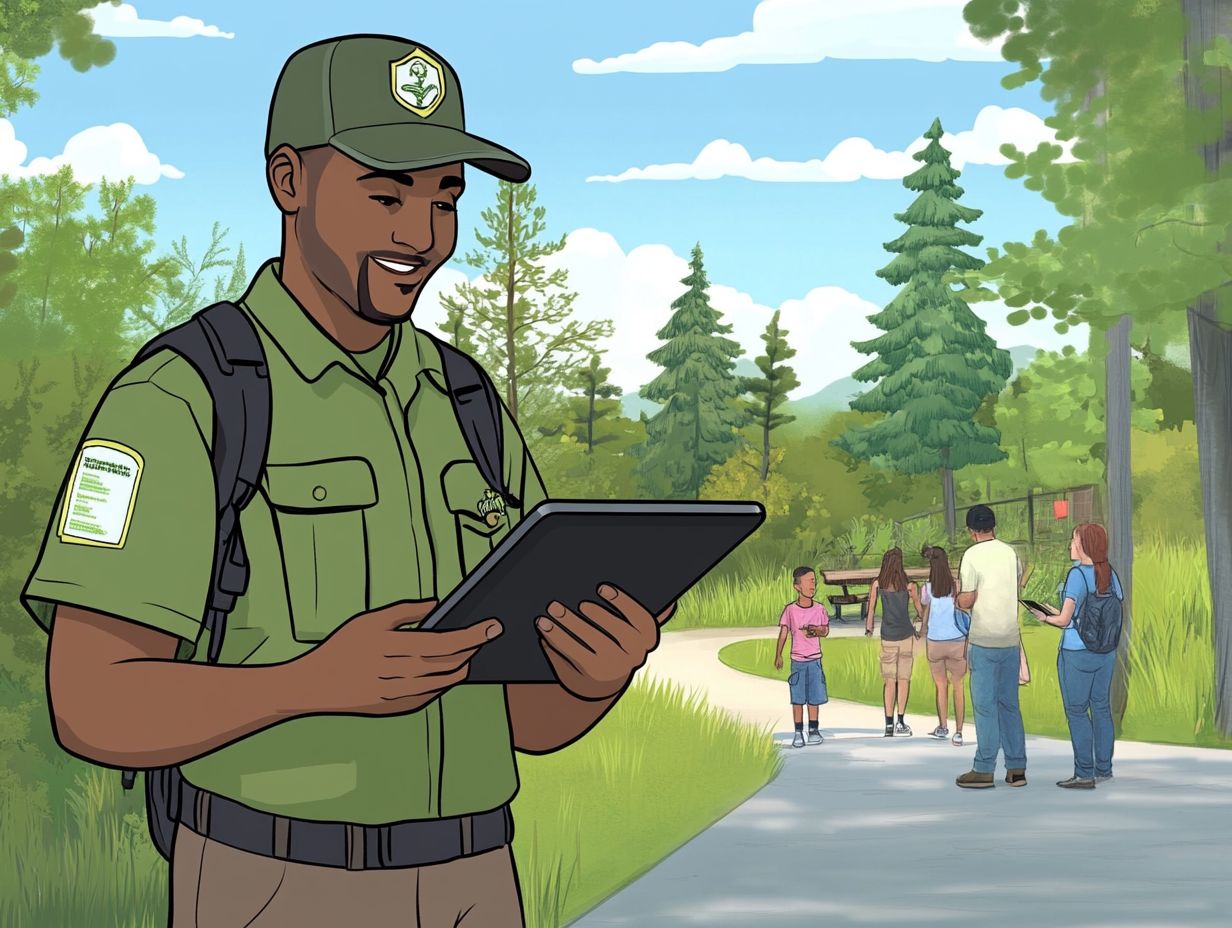
Surveys, interviews, and observational studies are fundamental methods for collecting both qualitative and quantitative visitor data that inform park management and the evaluation of amenities.
These approaches play a crucial role in gathering community feedback, enabling park administrators to tailor their services to meet the needs and preferences of users.
For instance, well-designed surveys can capture not only satisfaction levels but also specific suggestions for improvements, resulting in actionable insights.
In contrast, conducting interviews offers a deeper understanding through personal stories and experiences, often revealing the emotional connections that visitors have with the park.
Observational studies provide real-time tracking of visitor behavior, highlighting how different facilities are utilized.
By thoughtfully combining these methods, park managers can enhance their strategies and create more inviting spaces that resonate with the community.
Utilizing Technology for Data Collection
Technology plays a crucial role in data collection for visitor analytics in outdoor recreation areas, enabling real-time monitoring and analysis that enhances decision-making.
Mobile applications allow users to check in and record their experiences, generating a significant volume of location-based data. Smart technologies, including IoT devices, can track foot traffic and environmental conditions, providing a deeper understanding of visitor behavior and space utilization.
Data visualization methods transform large and complex datasets into easily comprehensible graphs, assisting park managers in recognizing trends and identifying their resource allocation needs. GIS mapping can also be employed for detailed spatial analysis.
Collectively, these technologies improve operational efficiency and resource management, enabling stakeholders to create better and more sustainable experiences for outdoor recreation users.
Examples of How Visitor Data Has Improved Outdoor Recreation Facilities
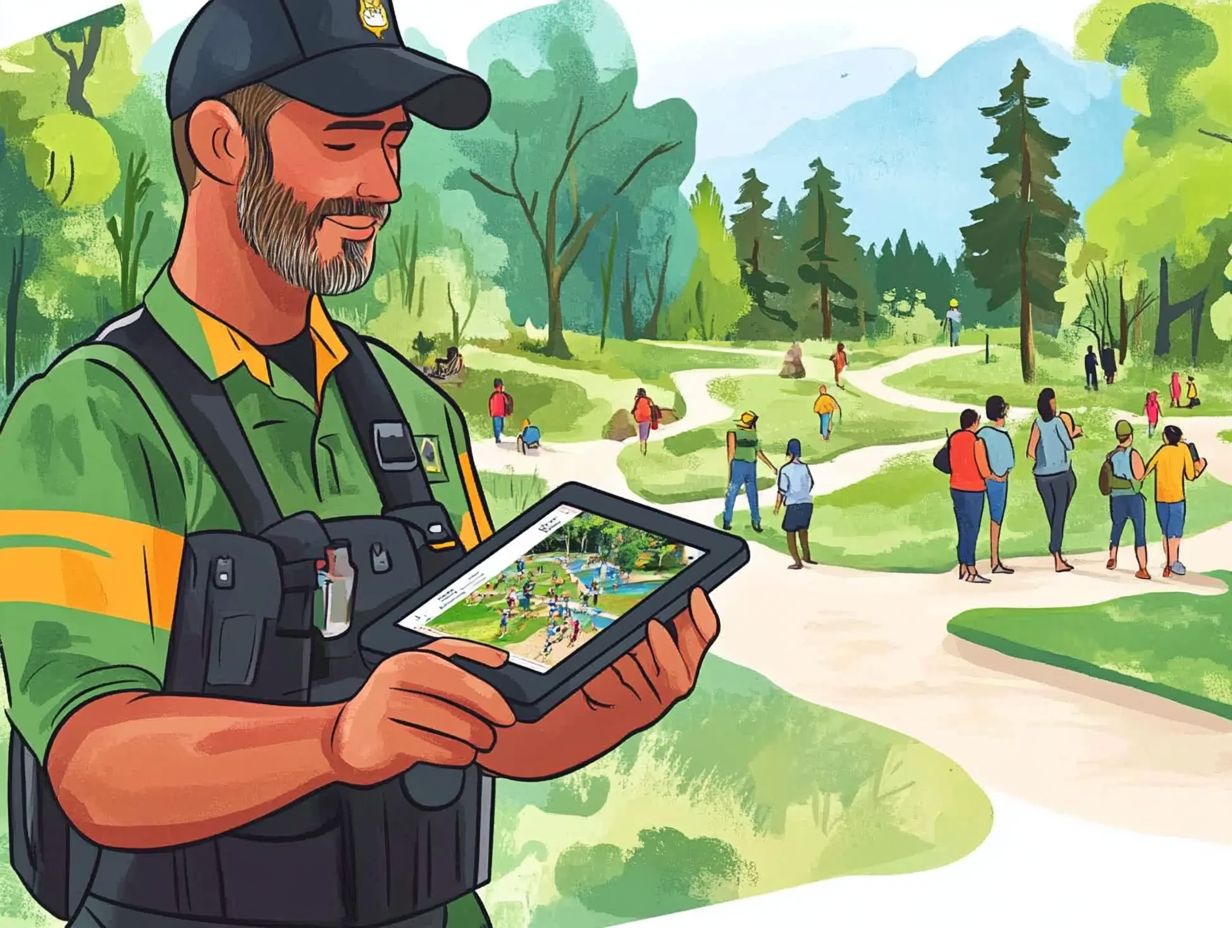
Numerous case studies demonstrate how visitor data has contributed to the enhancement of outdoor recreation facilities, showcasing effective park development strategies and user satisfaction.
Case Studies and Success Stories in Facilities Design and Park Development
The following case studies illustrate the successful use of visitor data in the outdoor recreation field.
One regional park in the Pacific Northwest implemented a Stormwater Management Plan to identify and address visitor usage patterns, allowing the park to protect its sensitive environment. They employed advanced data analytics to monitor visitor foot traffic, visitor demographics, and preferences regarding the placement of amenities such as picnic areas and restrooms. This analysis also examined potential issues related to the timing of usage, as well as projecting maintenance needs, facilities improvement, and demand for enhancements.
Plus the data generated from analytics, community forums were organized, enabling local residents to voice their needs and preferences. These discussions were instrumental in shaping the layout and accessibility features of recreational areas and public amenities.
As a result, the park became a space that not only experienced increased park usage patterns but also fostered a sense of pride and ownership among residents, leading to higher attendance and participation in organized events. Satisfied visitors tend to use park facilities more frequently and regularly, contributing to enhanced user experience and visitor retention.
Tips for Implementing Visitor Data Collection and Engagement Metrics in Outdoor Recreation Areas
The collection of visitor data in outdoor recreation areas should adhere to best practices to ensure that the information is effectively and meaningfully utilized for park management, facility planning, and environmental impact assessments.
Best Practices and Considerations for User Behavior and Feedback
The best practices for collecting visitor data involve understanding visitor habits and user behavior, ensuring data transparency, utilizing visitor surveys, and fostering feedback loops for continuous evaluation and improvement.
To maximize the value of visitor data, organizations must maintain open communication with their visitors, which helps build trust and encourages visitors to share their experiences, visitor preferences, and feedback honestly.
By utilizing available community resources and stakeholder collaboration, organizations can enhance their visitor data collection strategies and tailor them to better meet visitor needs and improve resource allocation.
They can implement adaptive strategies to modify their practices based on visitor feedback, ensuring that their data collection processes evolve in alignment with visitor expectations and requirements, leading to improved park infrastructure and maintenance schedules.


